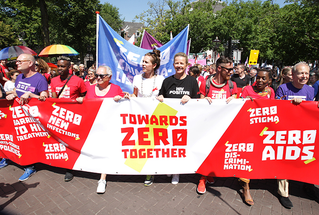
HIV/AIDS Assistance, Research & Support
Explore organizations dedicated to providing assistance, research, and support in the fight against HIV/AIDS.
Our analysts have compiled a number of highly rated charities dedicated to providing assistance, research, and support in the fight against HIV/AIDS. Consider donating to one of these organizations through the Charity Navigator Giving Basket. Make a difference today by encouraging those around you to get tested.
List of Best HIV/AIDS Prevention and Support Charities
Support Our Work if You Found This List Helpful
Make a tax-deductible donation to help us equip millions of donors with the tools and resources to make informed, impactful giving decisions.

Learn How We Curate Our Lists
View the criteria we use to select charities for our Where to Give Now, Popular Charities, and Best Charities lists.


